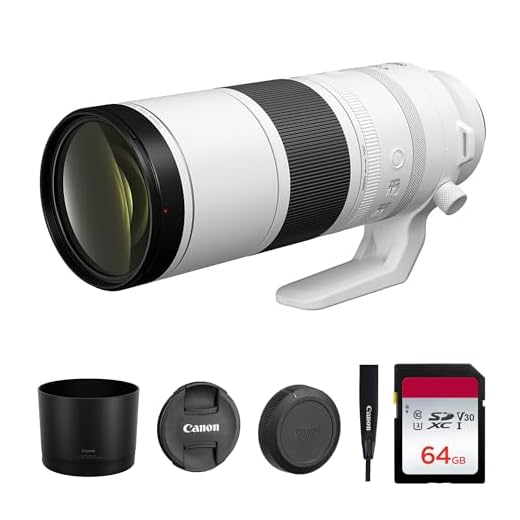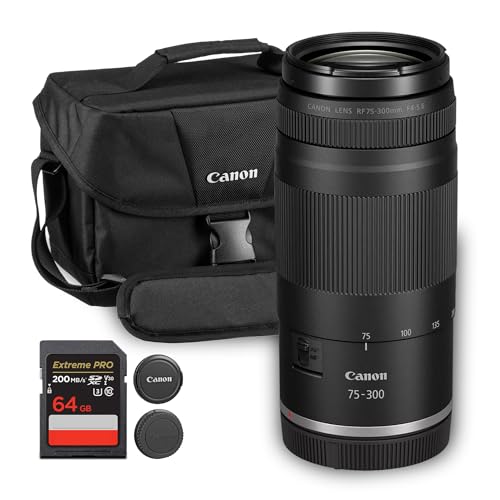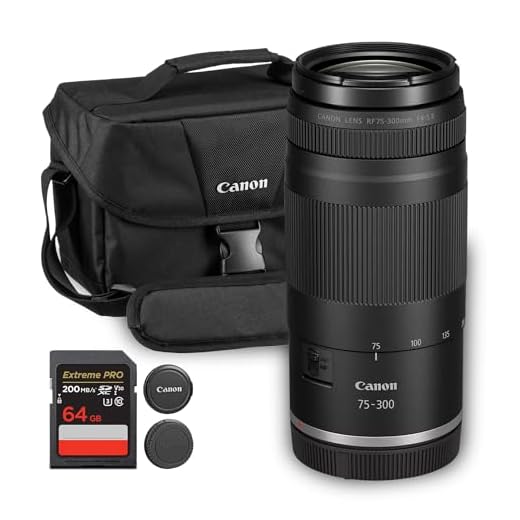



If you’re serious about photographing animals in their natural habitat, consider investing in a high-performance mirrorless system. I recommend the Sony A7R IV for its 61-megapixel sensor, which allows incredible detail and rich colors. Pair it with a fast telephoto zoom, like the Sony 100-400mm G Master, to ensure you can capture distant subjects with sharpness and precision.
This article explores optimal equipment choices for nature enthusiasts. I provide insights on various models that excel in diverse conditions and scenarios. Whether you’re tracking elusive creatures or capturing dynamic action shots, the right gear can significantly enhance your results.
You’ll find valuable comparisons of popular brands such as Nikon, Canon, and Fuji, as well as a breakdown of different types of optics suited for wildlife encounters. Additionally, I touch on accessories that can elevate your shooting experience, ensuring you’re well-prepared for any adventure.
This guide is ideal for aspiring wildlife shooters and seasoned professionals alike, offering practical advice to elevate your fieldwork. My goal is to help you make informed decisions that align with your style and needs, ultimately leading to stunning images and memorable experiences.
Best Equipment Choices for Capturing Wildlife
Choosing the right tools significantly impacts the quality of images produced in nature settings. I prioritize gear that provides excellent autofocus capabilities, fast burst rates, and robust build quality to withstand challenging conditions.
In terms of camera systems, I find that models featuring larger sensors excel in low-light scenarios and offer superior dynamic range, which is essential for capturing the intricate details of animals in their habitats. High frame rates allow me to freeze fast-moving subjects, ensuring every moment is perfectly framed.
Adequate Optical Gear
Equally critical is the selection of optical equipment. Telephoto options grant the ability to maintain distance from elusive subjects while still achieving impressive detail. The image stabilization feature enhances sharpness, especially in hand-held shooting situations.
- Focal Length: I recommend lenses with generous focal lengths, enabling clear shots of animals from a safe distance.
- Aperture: Choose optics with wider apertures to achieve beautiful depth of field, isolating subjects against soft backgrounds.
- Weather Sealing: Weather-resistant constructs allow for shooting in diverse environments without fear of damaging the equipment.
Combination of these elements culminates in remarkable imagery, allowing me to capture the essence of nature. An informed choice regarding gear based on personal shooting style and preferences can enhance the overall experience in wildlife encounters.
Choosing the Right Camera Body for Wildlife Shots
When selecting a camera body to capture wildlife moments, prioritize a model that excels in burst shooting and autofocus capabilities. A high frame rate allows for better chances of catching fast-moving animals. Equally important is a reliable autofocus system that can lock onto subjects quickly and accurately, especially in challenging environments.
Consider the camera’s sensor size. Larger sensors typically offer better low-light performance and dynamic range, which are beneficial in various lighting conditions. For outdoor settings, weather sealing can also enhance durability, protecting the gear from dust and moisture exposure.
Key Features to Evaluate
- Frame Rate: Aim for a minimum of 5 frames per second for effective capture of action sequences.
- Autofocus System: Look for a high number of focus points and advanced tracking capabilities.
- ISO Performance: Assess how the camera performs at higher ISO settings to maintain image clarity.
- Build Quality: Opt for a robust design that can withstand outdoor conditions.
- Battery Life: Longer battery performance ensures you won’t miss critical moments.
Incorporating a suitable camera body tailored for wildlife encounters enhances my chances of producing compelling images. I find that making trade-offs between features like weight and performance is crucial, particularly during extended outdoor sessions. Evaluate your shooting style and environment to select a device that complements your needs for the best results.
Essential Features to Look for in Lenses
When seeking the ideal optic for capturing fauna, I prioritize several key attributes that enhance image quality and versatility. The right specifications can significantly influence the success of my shots, especially in dynamic environments where creatures are often elusive or fast-moving.
First, a wide aperture is fundamental. A maximum aperture of f/2.8 or larger allows more light to enter, which can be beneficial for low-light scenarios, such as dawn or dusk. This feature also provides improved background separation, creating a pleasing bokeh effect that highlights the subject against a soft backdrop.
Key Attributes to Consider
- Focal Length: Long focal lengths, typically ranging from 200mm to 600mm, enable me to photograph subjects from a safe distance, reducing the risk of disturbing their natural behavior.
- Image Stabilization: Having built-in stabilization technology helps counteract camera shake that may occur when shooting at long distances, ensuring sharper and clearer images.
- Weather Sealing: A rugged, weather-sealed construction protects my gear from the elements, allowing me to shoot in various conditions without risking damage.
- Autofocus Performance: Fast and accurate autofocus systems are crucial, especially for capturing moving subjects. A lens that can quickly lock onto a target makes all the difference in fast-paced situations.
In addition to these attributes, a decent close-focusing distance expands my creative possibilities, allowing for detailed shots of subjects such as insects or small animals. The combination of these features not only enhances my ability to capture stunning images but also provides greater flexibility in different situations.
Recommended Camera Models for Wildlife Enthusiasts
For anyone captivated by capturing the intricate details of animals in their natural habitat, selecting the right equipment is a foundational step. I have found that specific features play a critical role in ensuring successful outcomes in this niche. Consider options that offer rapid autofocus capabilities, excellent low-light performance, and robust weather-sealing to withstand outdoor conditions.
Another consideration involves the sensor size, which significantly influences image quality and depth of field. A larger sensor can provide better resolution and dynamic range, making it easier to capture the subtleties of wildlife behavior. In addition, models with higher frame rates are invaluable for freezing fast-moving subjects in action.
Key Features to Look For
- Autofocus System: Look for systems with numerous focus points and advanced tracking to keep moving animals sharp.
- ISO Range: A wider ISO range allows for shooting in varied lighting conditions, enhancing versatility.
- Durability: Equipment should possess weather-resistant constructions to handle various environments.
- Weight and Size: Lighter models might ease long treks, but robustness should not be sacrificed.
In terms of brands, many offer specialized advancements that suit this type of shooting, ensuring that the capture process becomes more seamless. It’s also beneficial to invest in high-quality attachments that cater to distance without sacrificing image integrity. Understanding the specifications deeply can guide your purchase, maximizing the ability to document the beauty of nature with clarity and precision.
Optimal Focal Lengths for Various Wildlife Subjects
When capturing images of animals in their natural habitats, selecting the correct focal length is critical to achieving desired results. Different subjects require distinct approaches, often dictated by their size and behavior. For larger animals, such as elk or bears, I find that a focal length between 200mm and 400mm generally provides ample distance while maintaining detail and clarity.
In contrast, smaller creatures like birds or insects necessitate longer focal lengths. I typically opt for 400mm to 600mm lenses to ensure I can photograph them without disturbing their activities. This distance allows for greater safety and less chance of scaring them away.
Focal Length Recommendations
- Large Mammals: 200mm – 400mm
- Medium-sized Animals: 100mm – 300mm
- Birds: 400mm – 600mm
- Insects: 60mm – 105mm (macro lenses)
Understanding the behavior of the animals is also important. For instance, a tight shot of a lion resting may require a shorter focal length than a chasing cheetah. The ideal approach balances distance with the ability to capture engaging compositions.
| Subject Type | Optimal Focal Length |
|---|---|
| Large Mammals | 200mm – 400mm |
| Medium-Sized Animals | 100mm – 300mm |
| Birds | 400mm – 600mm |
| Insects (Macro) | 60mm – 105mm |
A key consideration is accessibility to the subject. If the animal is in dense foliage or high up in trees, longer focal lengths may be necessary to get a clear shot. In these situations, using a tripod can stabilize the longer lenses and enhance image quality.
Lastly, I remind myself that patience is essential. Waiting for the right moment often means being at a distance, and having the right focal length can make all the difference in capturing that perfect shot.
Understanding Autofocus Systems for Fast-Moving Animals
To capture sharp images of fast-moving subjects, it is essential to understand various autofocus systems available in modern devices. Advanced autofocus capabilities can significantly improve the chances of getting focused shots of wildlife in action.
Different systems use various methods to track and focus on fast-moving animals. Phase detection is commonly used in DSLRs and offers rapid focusing, while contrast detection is more prevalent in mirrorless models but can be slower. Hybrid systems combine both methods for enhanced performance.
Key Features to Consider
- Autofocus Points: A larger number of focus points allows for better tracking of moving subjects. Look for systems that offer cross-type points for increased accuracy.
- Continuous Focus: The ability to maintain focus as the subject moves is critical. Continuous or AI-driven autofocus modes can help lock on to the subject even at high speeds.
- Tracking Sensitivity: This setting allows you to adjust how the system responds to moving subjects. Higher sensitivity can help in fast-paced situations but may lead to tracking errors in certain conditions.
- Focus Speed: The time it takes to acquire focus is vital. Faster systems can adapt quickly as animals change direction or speed.
In practical terms, I often rely on burst mode when photographing active subjects. This allows me to capture several frames per second to increase the likelihood of getting a tack-sharp image. Utilizing the AF-C mode or equivalent helps maintain focus on a moving target, ensuring that shots remain clear.
Finally, understanding how to customize autofocus settings based on specific scenarios can elevate your results. Adjustments to tracking speed, sensitivity, and focus area can make a significant difference when capturing animals in motion.
Lightweight Options: Best Gear for Hiking and Wildlife Tracking
For my outdoor adventures, I prioritize compact and lightweight equipment that can withstand rugged conditions. Choosing a lightweight camera setup significantly eases the burden during long hikes, ensuring I remain agile while tracking elusive fauna.
I recommend opting for mirrorless models that strike a balance between portability and performance. These systems tend to be lighter than traditional DSLRs, and their advanced features allow for quick adjustments in various lighting situations. Paired with prime or zoom options that have a small form factor, I can capture quality images without excessive weight.
Choosing the Right Approach
In determining my gear, I assess a few key factors:
- Weight: Aim for gear weighing around 2-3 pounds. This ensures comfort during extended walks.
- Durability: Weather-sealed bodies and rugged construction can protect against harsh environments.
- Versatility: Consider lenses with a range of focal lengths to adapt to varying distances and species.
While I’m conscious of the weight, I also look at battery life and ease of use; I prefer gear that allows for a smooth workflow in dynamic settings. Accessories like lightweight tripods and compact bags are also essential in simplifying the carrying process.
With the right lightweight gear, I find that capturing intricate moments in nature becomes not just possible but a joy, allowing me to focus on the experience rather than the equipment.
Tips for Lens Maintenance in Challenging Environments
Always use a UV filter to protect the front element of your glass. This provides a first line of defense against dirt, scratches, and moisture. Clean the filter regularly to maintain image quality.
After each outing, inspect the gear for dust, sand, or water. Use a blower to remove loose particles and a soft microfiber cloth for any smudges or spots. If the lens is particularly dirty, consider using a lens cleaning solution.
- Protecting from Moisture: Use weather-sealed bags or cases, especially in wet conditions.
- Handling Extreme Temperatures: Allow equipment to acclimate slowly to changes in temperature to avoid condensation.
- Sand and Dust Precautions: Keep gear covered when not in use and avoid changing lenses in sandy environments.
Additionally, invest in lens hoods to shield against accidental bumps and flare from direct sunlight. Regularly check the seals and gaskets to ensure they are intact and functioning, especially in unpredictable weather.
Using these practices helps prolong the life of your gear and ensures performance even in tough conditions.
Best cameras and lenses for wildlife photography
Features
| Part Number | BCAN6473A003-002 |
| Model | BCAN6473A003-002 |
Features
| Part Number | KD-420800-T-N |
| Model | KD-420800-T-N |
| Warranty | 1 |
| Color | Black |
| Size | 9.45×2.64×2.64 inch |
Features
| Part Number | DC226 |
| Model | DC226 |
| Color | Black |
| Size | compact |
Features
| Part Number | 6263C002_EDIPC_1 |
Features
| Part Number | 420-800 |
| Model | Lightdow 420-800mm F8.3 |
| Warranty | 1 year manufacture warranty |
| Color | Black |
| Size | 9.45×2.64×2.64 inch |
Features
| Part Number | DC101L |
| Model | DC101 |
| Warranty | 1 Year Warranty |
| Color | Off White |
Features
| Part Number | 7155C002_EDIP_1 |
| Model | 7155C002_EDIP_1 |
Features
| Part Number | 75-300mm |
| Model | 75-300mm |
| Warranty | 1 Year |
| Color | Black |
| Release Date | 2016-11-22T00:00:01Z |
| Size | 300mm |
FAQ:
What are the key features to look for in a camera for wildlife photography?
When selecting a camera for wildlife photography, there are several important features to consider. First, a camera with a fast autofocus system is beneficial, as it allows you to quickly capture moving subjects. A higher burst rate, measured in frames per second (fps), is also advantageous for photographing wildlife in action. Additionally, look for a model with excellent low-light performance to handle early morning or evening shots. Weather sealing is crucial for outdoor use, ensuring your camera can withstand different environmental conditions. Finally, a good dynamic range allows you to retain detail in both highlights and shadows, which is essential for capturing the intricacies of wildlife.
Which types of lenses are best suited for wildlife photography?
For wildlife photography, telephoto lenses are typically the best choice as they allow you to get closer to distant subjects without disturbing them. A lens with a focal length of at least 300mm is commonly recommended. Prime lenses often provide superior sharpness and wider apertures, which are beneficial in low-light conditions. Zoom lenses, like a 100-400mm, offer versatility, enabling you to quickly adjust your framing without changing lenses. Additionally, consider lenses with image stabilization to counteract any camera shake when shooting at long focal lengths. Remember to also check the lens compatibility with your camera body.
How does one choose the right camera settings for capturing wildlife?
Selecting the right camera settings is crucial for successful wildlife photography. A fast shutter speed is necessary to freeze motion, especially with moving animals. A setting of 1/1000 of a second or faster is generally recommended for birds in flight. Adjust your ISO to maintain a balance between shutter speed and aperture; a higher ISO may be necessary in low-light conditions but can introduce noise. Use continuous shooting mode to take multiple shots in quick succession, increasing your chances of capturing the perfect moment. Lastly, consider using aperture priority mode to control depth of field and keep your subject in focus while softly blurring the background.
Are there specific brands or models that are highly recommended for wildlife photography?
Several brands and models are often recommended for wildlife photographers. Canon’s EOS R5 and Nikon’s Z9 are popular choices due to their high resolution and fast autofocus. Sony’s A9 II is also favored for its impressive burst rate and superb image quality. Lenses from these manufacturers, such as Canon’s EF 100-400mm or Nikon’s Z 400mm f/2.8, are excellent for wildlife. For those looking for more budget-friendly options, brands like Fujifilm offer capable models, such as the X-T4 with available telephoto lenses. It’s essential to consider your specific needs, such as weight and system compatibility, when making your choice.











